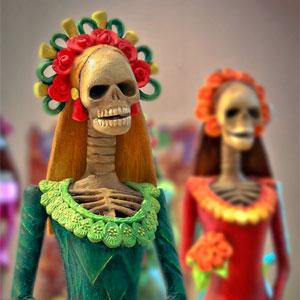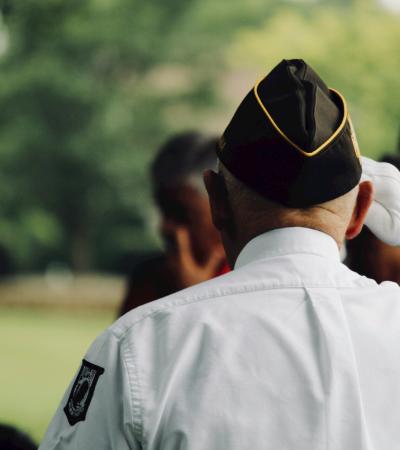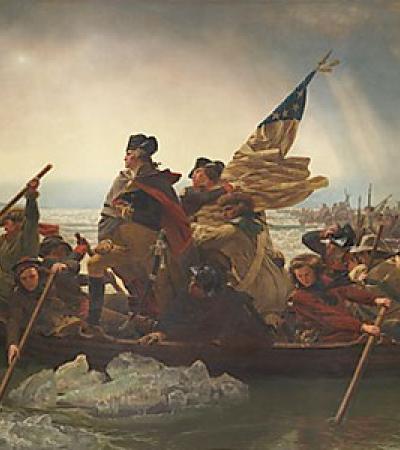This month, EDSITEment explores authenticity in Steinbeck’s The Grapes of Wrath; looks at what motivated Columbus’s travels; remembers the Cuban Missile Crisis on its fiftieth anniversary; offers new resources for AP English Literature and Composition; discusses voting in Jacksonian American as depicted in George Caleb Bingham’s The County Election; and discovers the roots of Halloween and the Day of the Dead.
Steinbeck’s The Grapes of Wrath: Nonfiction Sources
In a 1939 letter, John Steinbeck wrote that his goal for The Grapes of Wrath was “to rip a reader’s nerves to rags.” Through the novel, Steinbeck wanted readers to experience the life of the Dust Bowl migrants with whom he had spent time. To achieve the authenticity he desired, Steinbeck sought to pile genuine, specific detail upon genuine, specific detail. He found an invaluable source in the official reports of Tom Collins, the director of California’s Arvin Migrant Camp. Find out more in the lesson plan Steinbeck’s Use of Nonfiction Sources in The Grapes of Wrath.
What Was Columbus Thinking?
Most students recognize the name Christopher Columbus. They may be aware that his voyages ushered in the first period of sustained contact between Europeans and the Americas and its people. They may not know, however, why Columbus traveled to the New World or what happened to the native people he encountered. In What Was Columbus Thinking?, students read excerpts from Columbus’s letters and journals, as well as recent considerations of his achievements. Students reflect on the motivations behind Columbus’s explorations, his reactions to what he found and the consequences, intended and unintended, of his endeavor.
Fiftieth Anniversary of the Cuban Missile Crisis
Most historians agree that the world has never come closer to nuclear war than it did during a thirteen-day period in October 1962, after the revelation that the Soviet Union had stationed several medium-range ballistic missiles in Cuba. The Cuban Missile Crisis, 1962: The Missiles of October will examine how this crisis developed, how the Kennedy administration chose to respond, and how the situation was ultimately resolved. By examining both government documents and photographs students will put themselves into the role of President Kennedy during this crucial period, considering the advice of key administration figures and deciding on a course of action.
New for AP English Literature and Composition
These AP English Literature and Composition resources focus on mastery of content and include scholar- and teacher-reviewed websites, teacher-tested lesson plans, and thoughtful analysis. Develop your proficiency with poetry and poetic forms with Twenty-one Poems, and then turn to Fiction/Nonfiction for in-depth reading from multiple genres, periods, and cultures.
Booze, Fists, and Open Ballots: Voting in Jacksonian America
Every four years American citizens go to the polls to elect a president of the United States. At the same time, they will vote for a whole slate of state and local officials. This month EDSITEment celebrates the voting process, which is so central to the American system of democracy, with a special feature on The County Election by Missouri painter George Caleb Bingham (1811–1879). The artist grew up on the Missouri frontier during the period when Andrew Jackson and his party dominated American political life. Bingham, however, belonged to the Whig party, which was founded in opposition to the Democratic policies of Jackson. In a series of three election paintings, of which The County Election is the best known, he endeavored to capture the robust dynamics of the young republic’s electoral process so that, in his own words, “our social and political characteristics … will not be lost in the lapse of time for lack of an art record rendering them full justice.”

Halloween and The Day of the Dead
Each year on October 31, as the ghosts and goblins of Halloween parade the streets and doorsteps of our neighborhoods, we re-enact remnants of ancient folk customs that pay homage to departed ancestors as well as to the souls of our loved ones who have died. These annual revivals of ancient rituals form the basis of our contemporary American festival. Halloween has traditionally been associated in America with dressing up in costume and with consuming sweets; however, the roots of the holiday lie in late autumn harvest rituals that correspond to natural, seasonal changes and that are expressed in commemorations of the dying year. During this period of transition, cultures across the world remember those who have passed on by drawing an analogy between human death and the dark, cold winter months that loom ahead. Find out more in the Origins of Halloween and the Day of the Dead feature.



